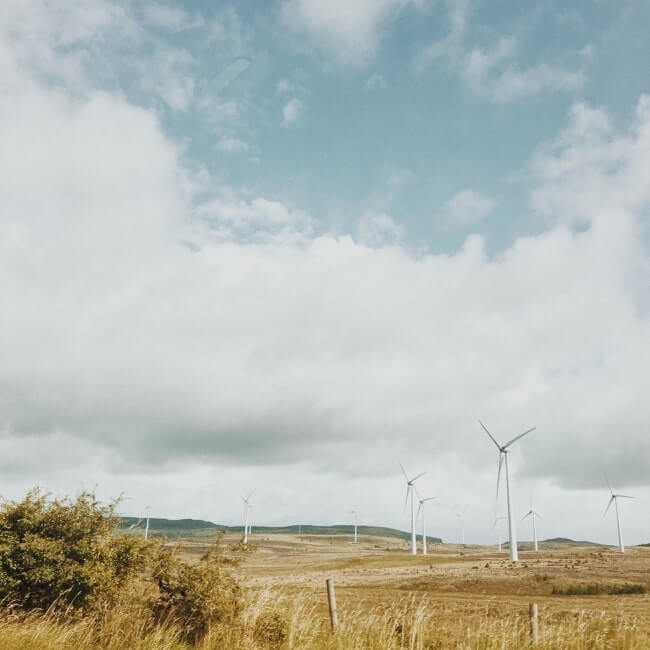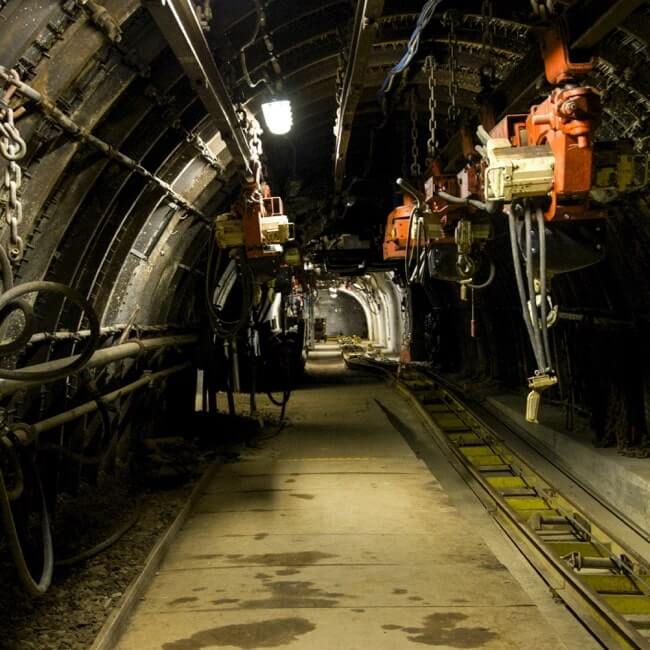How resources-efficient are LatAm datacenters?

Energy and water efficiency is pressuring industries that are intensive in the use of those resources, in addition to being at the top of the sustainability and ESG agenda of shareholders and investment funds.
Those demands are particularly pertinent for datacenters, which must rely on constant and abundant supply of power and water for the cooling of the rooms and equipment and for the uninterrupted operation of servers and racks.
“All [datacenter] customers are extremely concerned about how to become even more efficient, considering that their end users, which are hyperscale customers, are making public commitments to sustainability and these end up pushing the entire chain,” Vertiv’s Latin America VP Rafael Garrido told BNamericas.
Vertiv is one of the leaders in technologies for critical energy and thermal management systems in datacenters.
Tracking resource efficiency in the datacenter industry is done mainly by three metrics, established by trade groups of datacenter firms and related equipment industry companies. They are PUE (power usage efficiency), CUE (carbon usage effectiveness) and WUE (water usage effectiveness).
BNamericas spoke to three of the main players in the LatAm datacenter industry, builders and operators of datacenters in the hyperscale and colocation formats, to assess how they are faring.
QUENCHING THE THIRST OF DATACENTERS
WUE is calculated by dividing the annual site water usage by the IT equipment energy consumption, giving units of liters/kilowatt hour (l/kWh).
This metric was created by Green Grid, a global industry consortium aimed at improving the efficiency of datacenters and business computing systems. Green Grid is a member of the Information Technology Industry Council (ITI), a trade association that works to advance public policies for the tech sector.
There is no consensus on what an ideal WUE should be. According to a 2016 report by the US Department of State, the average WUE in datacenters in the US was around 1.8l/kWh.
According to the same report, datacenters with a WUE of 0.2l/kWh or below use less than one cup of water for every kilowatt-hour supplied to servers.
The largest company in the segment in Latin America, with 19 datacenters in operation and nine more under construction in the region, Ascenty reports an average WUE of 0.043l/kWh for its sites, a company spokesperson told BNamericas.
The group controlled by US funds Digital Realty and Brookfield Infrastructure Partners said it is constantly looking to be efficient in the use of water.
Piemonte, the holding of datacenter firm Elea Digital with six datacenters in Brazil, does not detail its average WUE. According to CEO Alessandro Lombardi, “The technologies we use are among the most efficient.
“In Rio de Janeiro, for example, we spend around 250ml per kWh consumed in the IT area, that is, a glass of water per kilowatt hour,” Lombardi told BNamericas.
According to the CEO, ongoing investments in air-cooling technology in Elea's infrastructure will allow the WUE to be further reduced. He also said the company aims to be able to monitor the indicator in real time, instead of calculating it on a monthly basis as is traditional in the industry.
[insight#242166311]
US multinational group Equinix, which in Latin America operates 15 international business exchange datacenters in seven metropolitan areas in five countries, did not provide the metric.
A company spokesperson told BNamericas that the European Union’s CNDCP (Climate Neutral Data Center Pact) is outlining a WUE within its 2030 green digital agenda, and that Equinix will “comply with such recommendations."
The European Digital Strategy sets a goal of achieving climate-neutral, highly energy-efficient and sustainable datacenters by no later than 2030.
Nonetheless, a 2020 report by the European Commission showed that energy consumption of datacenters in EU member states was expected to increase from 2.7% of the electricity demand in 2018 to 3.2% by 2030.
“The study finds that, due to the nature of cloud computing and the diversity of cloud service providers, there is no single solution to reach the 2030 target,” the report said.
“Nevertheless, existing instruments can – to varying degrees – be used as a starting point or at least as an inspiration for further developments or new designs of policy instruments. Examples include the EU Code of Conduct on Data Center Energy efficiency, and the forthcoming reviews of the Ecodesign Regulation on servers and data storage products and the Energy Efficiency Directive.”
ALSO READ: LatAm datacenter power spending set for steady growth until 2027
POWER-EATING MACHINES
The datacenter industry is one of the biggest consumers of energy. According to market estimates, power corresponds to as much as 60% of datacenter costs.
Air conditioning systems, in particular, are one of the “big eaters” of power, accounting for about 40% of all datacenter infrastructure consumption, according to Vertiv.
Keeping track of all that is the reason why PUE was created. The metric is calculated by dividing the total facility power (the power entering the site) by the IT equipment power (the power effectively used to run the machines).
According to the US Natural Renewable Energy Laboratory (NREL), studies show different ranges of PUE values for datacenters, but with an overall average of around 1.8. "Datacenters focusing on efficiency typically achieve PUE values of 1.2 or less," according to NREL.
At Equinix, the group's annual average global PUE in 2020 was 1.51, down from 1.61 in 2015.
At Ascenty, the average PUE of its 19 datacenters in Latin America is currently at 1.48.
Piemonte/Elea Digital are working to reach a PUE of 1.5 or less in all its datacenters by the end of June, according to CEO Lombardi. He did not reveal the group's current metric.
The group recently signed a long-term agreement with Vertiv to provide operation and maintenance services for Elea Digital's datacenters.
“Our federation of six datacenters has issues different than the hyperscalers [datacenters] concentrated in São Paulo region, as each datacenter has different levels of PUE. The geographic spread of our edge [datacenter] ecosystem, which is our differentiator, also offers particularities,” Lombardi said.
According to the executive, the company's datacenters that already have tier III certification from the Uptime Institute – those in São Paulo, Brasília and Rio de Janeiro – operate under “normal conditions" in terms of PUE target.
“The others – Curitiba, Porto Alegre and Brasília BSB1 – may have a PUE level some 15% higher before we complete the investments we’re making in critical infrastructure.”
[insight#259786035]
ERASING THE CARBON FOOTPRINT
CUE is another metric developed by Green Grid to measure datacenter sustainability in terms of carbon emissions.
It is defined as the relation between the CO2 emissions produced by the datacenter and the energy consumption of IT equipment. The output is measured in kilograms of CO2 per kWh.
None of the three companies provided their CUE averages, although they did comment on their sustainability investments.
“So far in 2022, we’ve managed to complete the purchase of energy 100% from renewable sources. In other words, we will not have carbon emissions in our operations under normal conditions. This means that we decided to purchase more expensive, but cleaner, energy,” Piemonte’s Lombardi said.
Ascenty said it already has 100% of its power coming from renewable sources.
“I-RECs [renewable energy certificates] are acquired to prove the origin of 100% of the energy used. For other emissions, carbon credits are also acquired to guarantee zero carbon,” a spokesperson told BNamericas.
Another important player in the sector in Latin America, Scala Data Centers, controlled by the US fund DigitalBridge, claims to have been the first Latin American datacenter company to achieve carbon neutrality.
Last June, the company obtained carbon neutrality certification for operating with 100% of energy from verified renewable sources. The certification was issued by Natural Capital Partners.
Scala claims that since 2020 it operates with renewable energy through long-term power purchase agreements, backed by renewable energy certificates.
Equinix Brasil CEO Eduardo Carvalho told BNamericas in a recent interview that the company is doubling down on renewables and set itself the goal of becoming “100% green” globally by 2025.
[insight#260217541]
Subscribe to the leading business intelligence platform in Latin America with different tools for Providers, Contractors, Operators, Government, Legal, Financial and Insurance industries.
News in: Electric Power (Brazil)

Roundup: Itaipu investment, new pre-salt blocks, transmission tender and more
BNamericas provides a roundup of Brazil energy news.

Photovoltaic energy can place Brazil among solar segment leaders
In 2024, photovoltaic energy production has already exceeded 38GW of installed capacity in the country, representing almost 17% of the national ele...
Subscribe to Latin America’s most trusted business intelligence platform.
Other projects in: Electric Power (Brazil)
Get critical information about thousands of Electric Power projects in Latin America: what stages they're in, capex, related companies, contacts and more.
- Project: Ventos do Açu 4 offshore wind complex (Ventos do Açu wind complex)
- Current stage:

- Updated:
4 days ago
- Project: Ventos do Açu 1 offshore wind complex (Ventos do Açu wind complex)
- Current stage:

- Updated:
4 days ago
- Project: Asa Branca II offshore wind farm
- Current stage:

- Updated:
4 days ago
- Project: Votu Winds offshore wind farm
- Current stage:

- Updated:
6 days ago
- Project: Canoa Grande VII photovoltaic plant (Canoa Grande photovoltaic complex)
- Current stage:

- Updated:
6 days ago
- Project: Canoa Grande VIII photovoltaic plant (Canoa Grande photovoltaic complex)
- Current stage:

- Updated:
6 days ago
- Project: Canoa Grande VI photovoltaic plant (Canoa Grande photovoltaic complex)
- Current stage:

- Updated:
6 days ago
- Project: Canoa Grande V photovoltaic plant (Canoa Grande photovoltaic complex)
- Current stage:

- Updated:
6 days ago
- Project: Alemão
- Current stage:

- Updated:
6 days ago
- Project: Canoa Grande IV photovoltaic plant (Canoa Grande photovoltaic complex)
- Current stage:

- Updated:
6 days ago
Other companies in: Electric Power (Brazil)
Get critical information about thousands of Electric Power companies in Latin America: their projects, contacts, shareholders, related news and more.
- Company: WMetria Consultoria Ambiental
- Company: WEG S.A. (WEG)
-
The description included in this profile was taken directly from an official source and has not been modified or edited by the BNamericas’ researchers. However, it may have been...
- Company: Sol de Itaueira I SPE LTDA
- Company: JPW Engenharia Elétrica Ltda. (JPW)
- Company: FIP Development Fund Warehouse
- Company: Iqony Solutions do Brasil
-
The description contained in this profile was taken directly from an official source and has not been edited or modified by BNamericas researchers, but may have been automatical...
- Company: Brametal S.A. (Brametal)
-
The description contained in this profile was taken directly from an official source and has not been edited or modified by BNamericas researchers, but may have been automatical...




